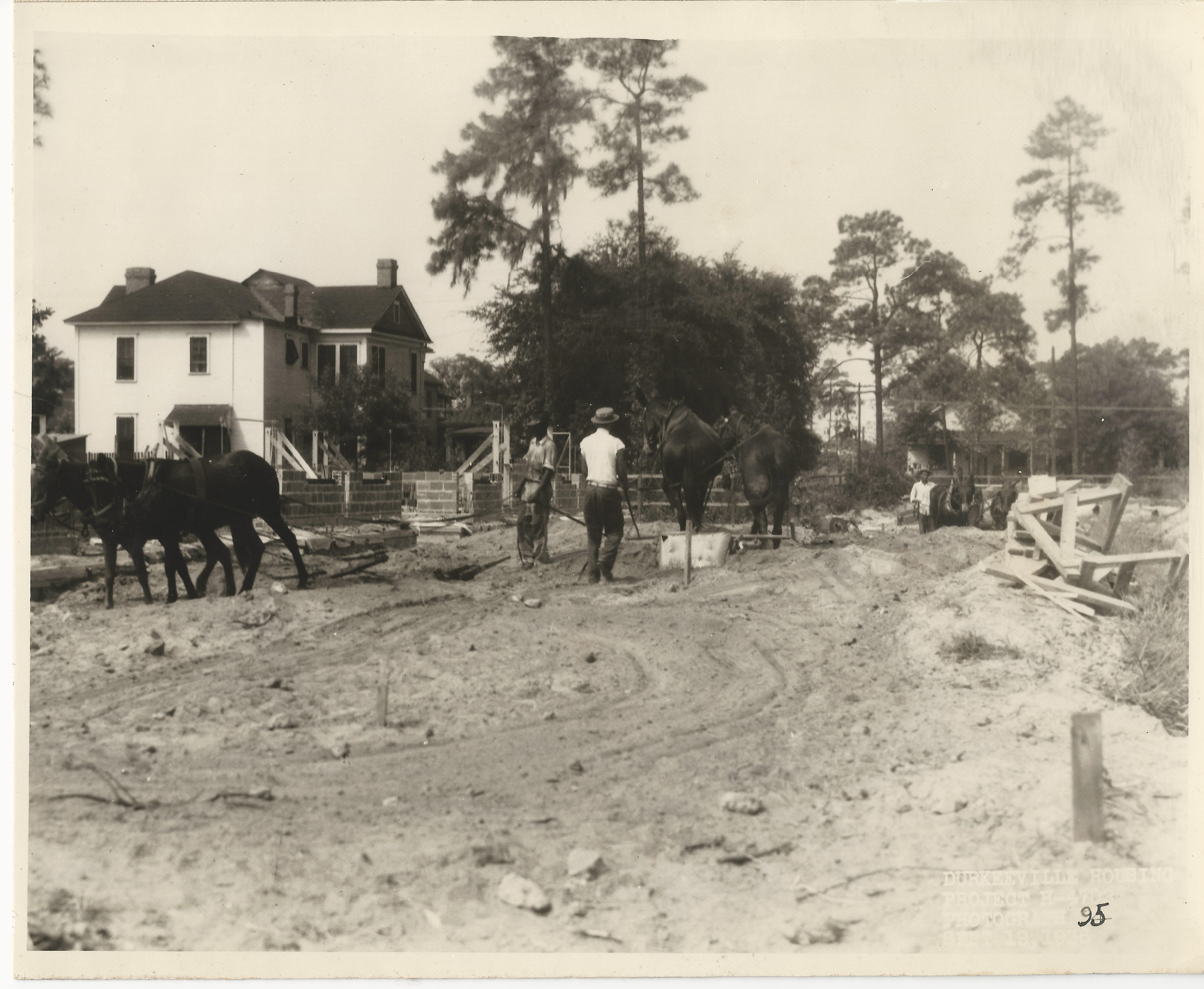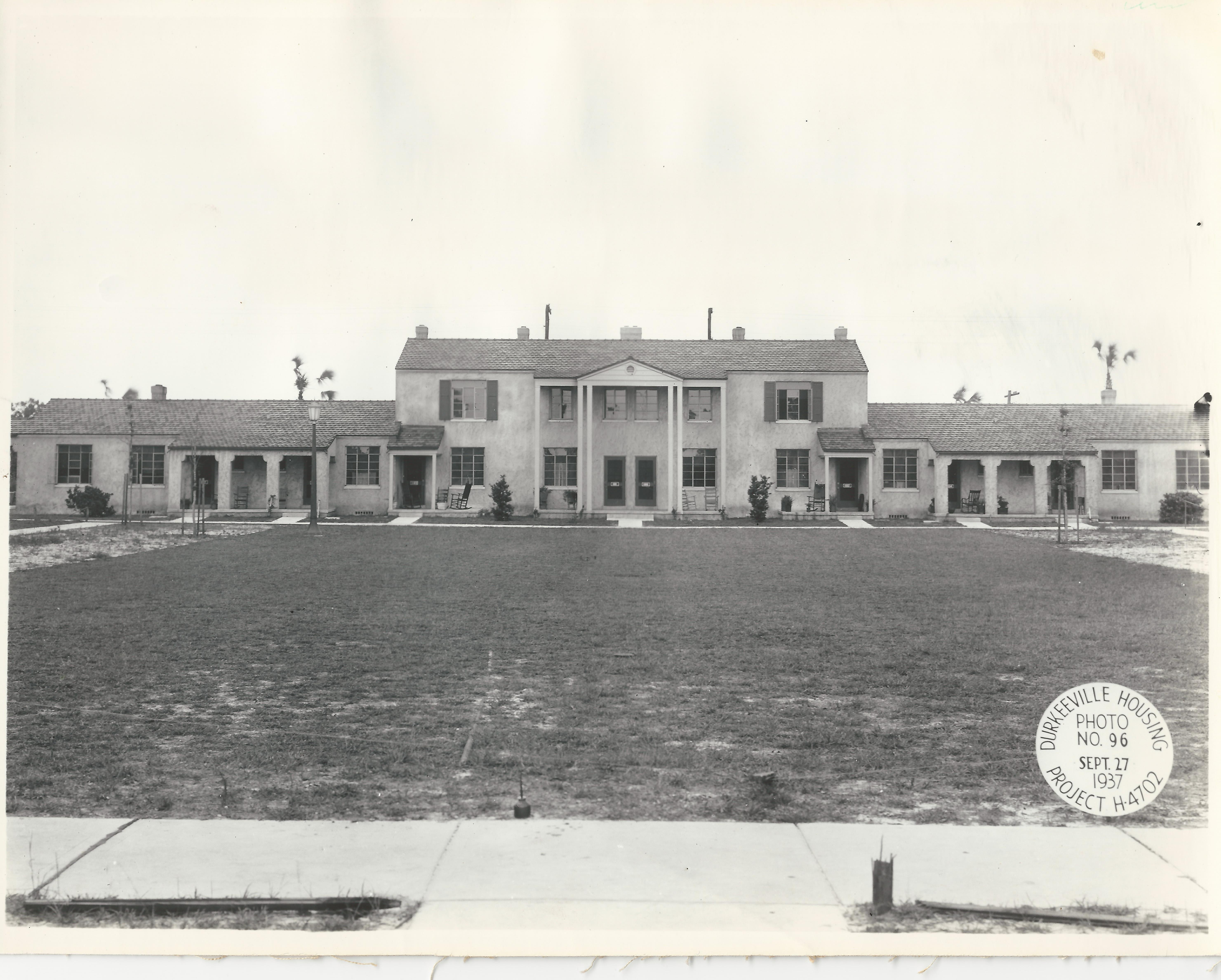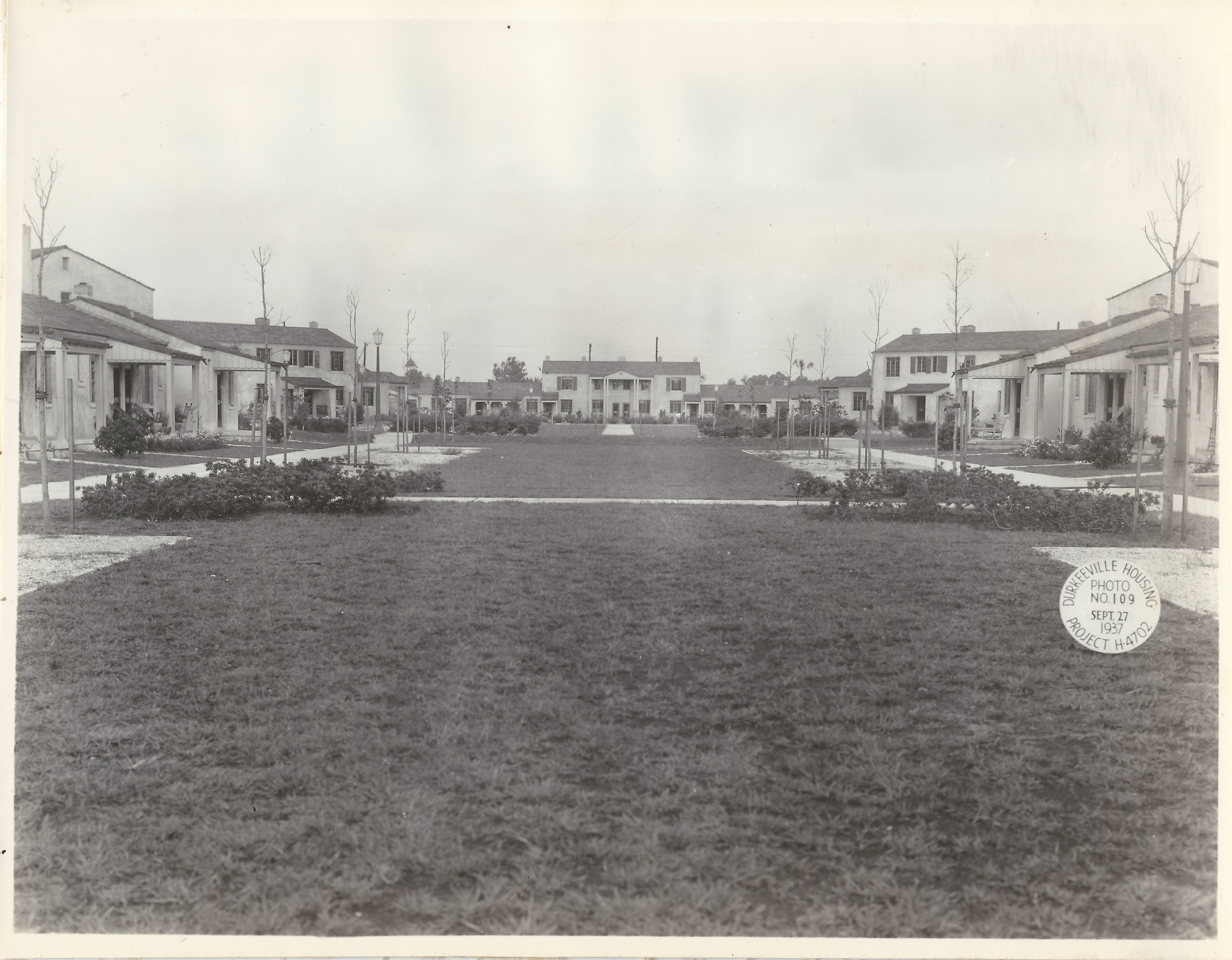Durkeeville
Durkeeville was established in the 1930s as a neighborhood for a growing population of middle-class Blacks in the segregated city of Jacksonville. Situated northwest of downtown, much of the area’s initial development was due to the North Jacksonville Street Railway, Town and Improvement Company which began in 1902 with the aim of connecting northwest Jacksonville with downtown. Many businesses and institutions sprouted along the line and some, like Edward Waters College, relocated to take advantage of the transportation it offered.
Residences, too, grew in the neighborhood, and the area was home to one of the earliest federally funded housing projects and the second in Florida. In 1937, the Public Works Administration finished the 215-unit development spanning six city blocks. Named the Durkeeville Housing Project after Dr. J. H. Durkee who had owned a sizable portion of the area’s land, the public housing development served as an example for future housing projects throughout the nation.



Platted between 1934 and 1944, the area’s remaining property was developed into a subdivision–Durkee Gardens (Jacksonville’s first Black historic district)—that became home to more economically advantaged African Americans–doctors, lawyers, teachers, and religious leaders among them. Many of the homes were built by African American contractors, further enriching local Black communities. Durkeeville was also home to the baseball park Barrs Field (now J.P. Smalls Baseball Park) which had been established in 1912. The park was the home of the Negro League team the Jacksonville Red Caps and the Minor League Jacksonville Braves. It was the location of Old Stanton High School, the first Black high school in the state, and the Boylan-Haven School for Girls, which had been established as a high school in LaVilla and moved to Durkeeville in the early 1900s. Thus, until desegregation, Durkeeville was a vibrant community that reflected an economic mix of Jacksonville’s Black residents.
